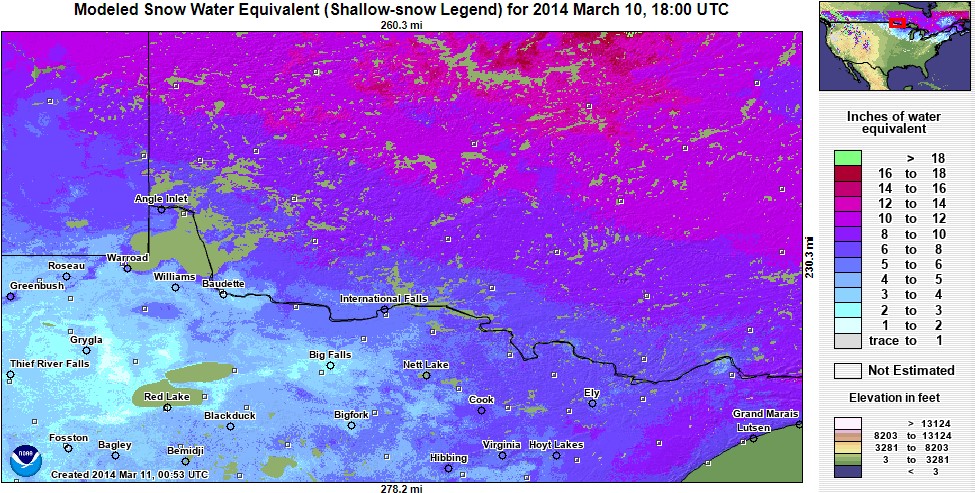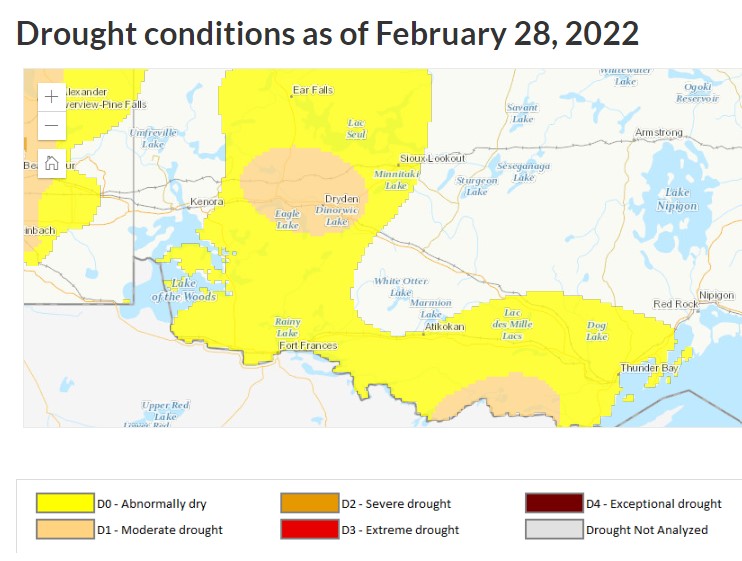The Lake of the Woods Control Board held a Regulation Meeting on Tuesday, March 8.
Regulation Meetings are held several times a year to review basin conditions and forecasts in order to set a seasonal operational strategy. The Board also considers input from those invited to the meetings, including representatives from First Nations, Specific Interest Groups and Resource Agencies. The seasonal strategy describes how the Board intends to regulate outflows from Lake of the Woods and Lac Seul under a range of potential flow conditions.
The Board adopted a seasonal Regulation Strategy that includes goals for the end of the winter drawdown period (March 31 for Lake of the Woods, April 15 for Lac Seul) and for the refill period until the end of June.
Seasonal conditions examined by the Board included the following, all of which will play a role in the spring regulation of Lake of the Woods, Lac Seul, and the Winnipeg and English Rivers:
- Current Hydrological Conditions
Long-standing drought conditions remain across the Winnipeg River drainage basin, with classifications by Canadian and American agencies ranging from abnormally dry to severe drought. This is an improvement from the summer and early fall of 2021, where drought was severe to exceptional. The improvement is due to late fall rainfall, which has resulted in river flows across most of the drainage basin slowly climbing from very low summer rates to the low end of the normal range for winter.
- Snowpack development
The accumulated snowpack depth is higher than in recent years. Some areas have very high snowpack depth, including around Kenora, Ear Falls, and south of Rainy River in Minnesota. In the upper Rainy-Namakan watershed, the snowpack is on the high end of the normal range for early March. The LWCB expects that the substantial snowpack will resolve the drought conditions.
When considering potential for spring runoff, the water content of the snowpack is more important than the snow depth. Estimates of snow water equivalent, based on a variety of data sources including field measurements, indicate moderately high to high snow water for the start of March. Generally, the snow water at this point of the winter is similar to that seen in 2019 and 2020, and substantially less than in the last year with high spring water levels, 2014. Historic Snow Water Equivalent maps are available at NOAA’s website (select year, and click on Redraw Map).
Below are estimates from 2022, 2020, and 2014.



- Winter Temperatures
Colder winters generally correspond to later thawing of the ground in the spring. Runoff from snowmelt and rainfall cannot be absorbed in frozen ground, and will instead flow to wetlands, streams, rivers and lakes. Early spring rainfall before the ground has thawed can, therefore, lead to rapid rise in streamflows.
This winter has been colder than normal. Heating Degree Days are a simple measure of accumulated cold through the winter that can be useful in understanding the severity of the winter. Heating degree days from December 1 in Kenora are 85th percentile for data back to 1967. This is the coldest since 2014, though only slightly greater than 2018. However, anecdotal reports that early season snow has provided an insulating layer to the ground, thereby limiting frost depth, are consistent with limited frost depth measurements.
- Spring outlook
Seasonal forecasts from Canadian and American weather agencies indicate an equal likelihood of above or below normal precipitation through May, with the American seasonal forecast suggesting a warmer spring is more likely.
How quickly flows rise across the basin will be determined by the weather conditions, including temperature, wind and, most importantly, rainfall. While there is substantial snow in the basin, a dry spring may still result in lower water levels for the summer, whereas a wet spring could see high flows develop. The amount of rain and its timing relative to the melting snow and thawing ground, will be the most important factors in how the spring flows develop.
The Board will closely monitor the development of the spring melt as it continues to direct drawdown of the lakes in March. Once the spring melt is underway, the Board will follow the newly adopted strategy to balance rising lake and river levels to try balance objectives such as fisheries, wild rice, navigation and risk of high water.

